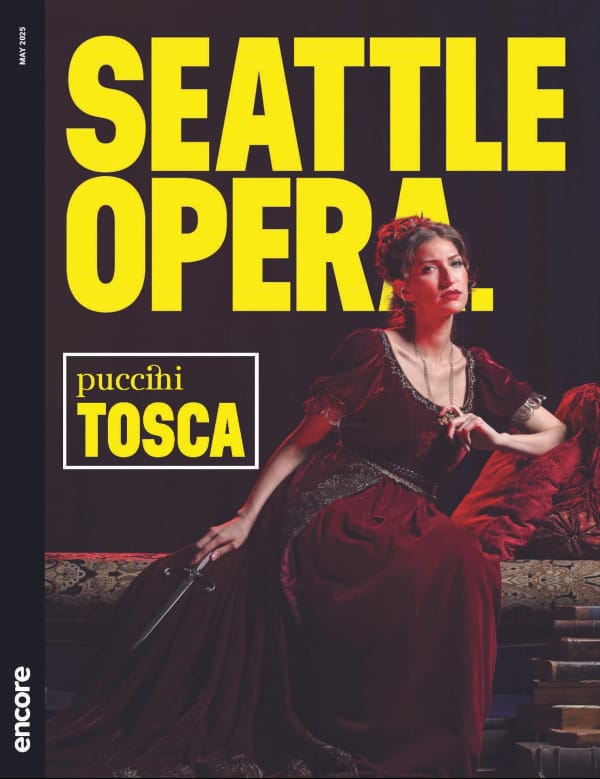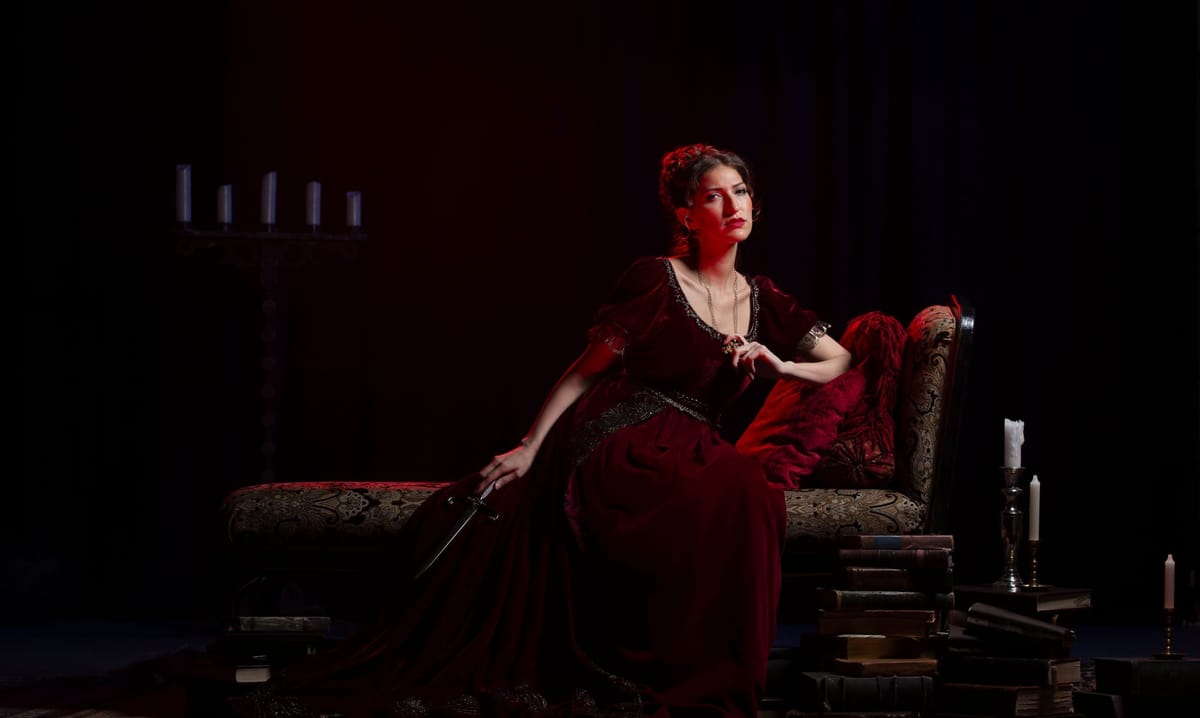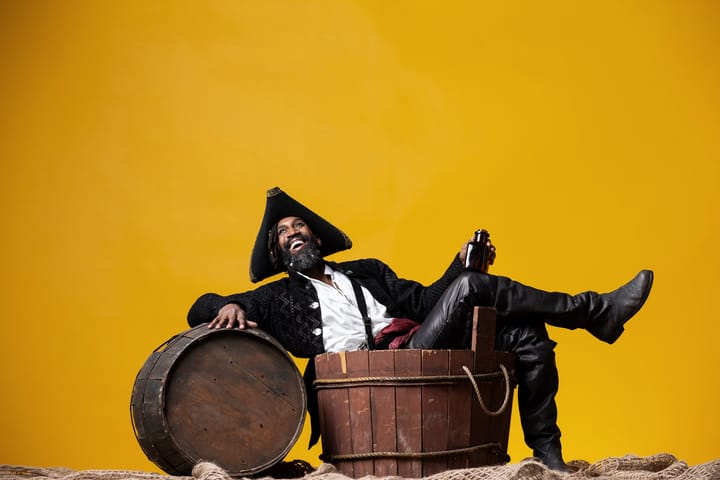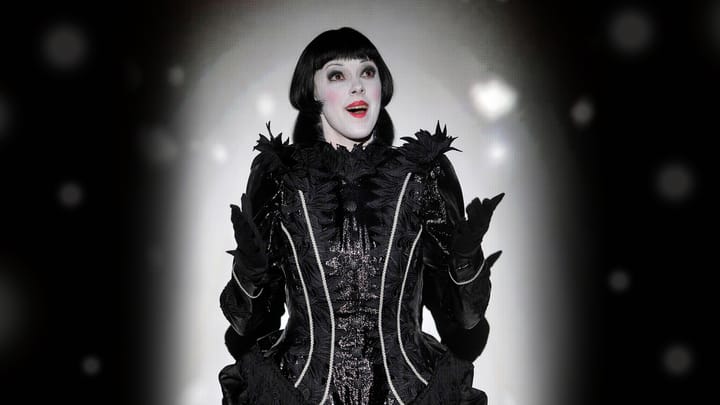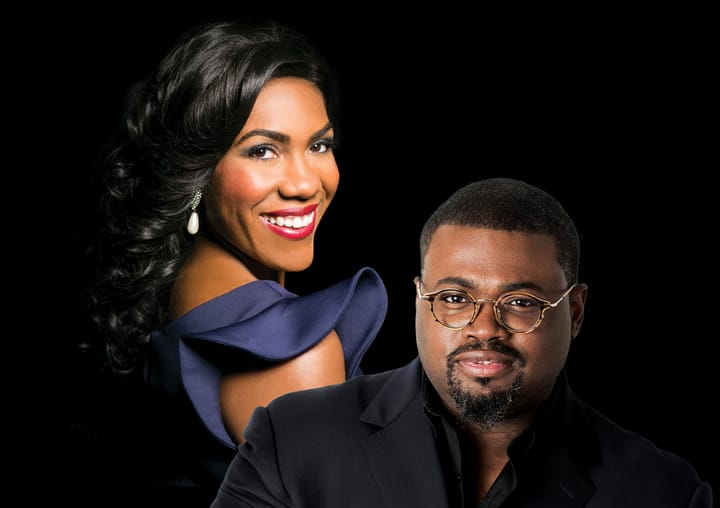May 3–17, 2025 | McCaw Hall
In This Program
- Show Information
- Who’s Who
- Letters
- Features
- Additional Information
Production Sponsors
Principal Singer Season Sponsor
Joan Watjen
in Memory of Craig M. Watjen
Production Sponsors
4Culture
Office of Arts & Culture, Seattle
Artist Sponsors
Dr. Susanne & Mr. Jay Wakefield
Yonghoon Lee as "Mario Cavaradossi"
We are deeply grateful to you, Seattle Opera’s 4,700+ Annual Fund donors.
Your passion for opera and contributions at every dollar amount inspire great performances at McCaw Hall, and support engaging activities at The Opera Center and throughout Washington state all season long!
Thank you!
Music by Giacomo Puccini
Libretto by Luigi Illica and Giuseppe Giacosa
Premiere: Rome, Teatro Costanzi, 1900
Seattle Opera Premiere: 1964
Performances at Marion Oliver McCaw Hall
May 3, 4, 9, 10, 11, 14, & 17, 2025
In Italian with English captions
Act I: 47 minutes
Intermission: 25 minutes
Act II: 44 minutes
Intermission: 20 minutes
Act III: 30 minutes
CONDUCTOR
Leonardo Sini †
DIRECTOR
Brenna Corner
SET DESIGNER
Ercole Sormani
COSTUME DESIGNER
Andrew Marlay
LIGHTING DESIGNER
Connie Yun
SOUND DESIGNER
Robertson Witmer
WIGS, HAIR, AND MAKEUP DESIGNER
Ashlee Naegle
CHORUS MASTER
Michaella Calzaretta
YOUTH CHORUS MASTER
Julia Meyering
FIGHT DIRECTOR
Geoffrey Alm
ENGLISH CAPTIONS
Jonathan Dean
Cast
(in order of vocal appearance)
CESARE ANGELOTTI
Adam Lau
SACRISTAN
Barry Johnson
MARIO CAVARADOSSI
Yonghoon Lee (May 3, 9, & 11)
Rame Lahaj † (May 4, 10, 14, & 17)
FLORIA TOSCA
Lianna Haroutounian (May 3, 9, & 11)
Vanessa Goikoetxea (May 4, 10, 14, & 17)
Tiffany Townsend *
BARON SCARPIA
Željko Lučić † (May 3, 9, & 11)
Craig Colclough † (May 4, 10, 14, & 17)
SPOLETTA
John Marzano
SCIARRONE
Ilya Silchukou †
SHEPHERD BOY
Grace Elaine Franck-Smith (May 3, 9, & 11)
Anthony E. Kim (May 4, 10, 14, & 17)
JAILER
Micah Parker †
ASSISTANT CONDUCTOR
Philip A. Kelsey
MUSIC PREPARATION
Michaella Calzaretta
David McDade
Philip A. Kelsey
Jay Rozendaal
ASSISTANT DIRECTOR
Mike Janney
PRODUCTION STAGE MANAGER
Jonathan Moore
ASSISTANT STAGE MANAGERS
Quinn Chase, Alycia Martin, Cristine Reynolds
* Cover artist
† Seattle Opera mainstage debut
Opera presentation and production © Seattle Opera 2025. Copying of any performance by camera, audio, or video recording equipment, and by any other copying device, and any other use of such copying devices during the performance is prohibited.
The Story
Act I
Rome, June 17, 1800
Church of Sant’Andrea della Valle
Cesare Angelotti, an escaped political prisoner, enters the church and hides in his family chapel. A painter, Mario Cavaradossi, comes in to work on his portrait of Mary Magdalene, inspired by a woman he’d observed praying in church the day before—Angelotti’s sister, the Marchesa Attavanti. While an old Sacristan performs his duties cleaning the church, Cavaradossi compares the blonde Magdalene he is painting to the raven beauty of the woman he loves, the singer Floria Tosca.
When the Sacristan leaves, Angelotti emerges from hiding and asks for Cavaradossi’s help. They are interrupted by the entrance of Tosca, who has come to see her love. Cavaradossi conceals Angelotti’s presence from Tosca out of fears the pious Tosca may tell her Catholic confessor about Angelotti’s escape. Cavaradossi also attempts to calm Tosca’s jealousy of the blond Magdalene he has painted. With her departure the two men begin to make a plan, only to hear a cannon shot—a signal that Angelotti’s escape has been discovered. They flee to hide Angelotti at Cavaradossi’s villa.
The Sacristan and the acolytes enter, excited about late-breaking news of their triumph and Napoleon’s defeat. Baron Scarpia, chief of police, enters, having tracked Angelotti to the church. Tosca returns to find her lover gone. Scarpia sows seeds of jealousy in Tosca, suggesting that her lover is having an affair with the Marchesa. Tosca rushes out to find the painter before her anticipated performance that evening. Scarpia sends his minions to follow her, hoping that Tosca will lead them to Cavaradossi and Angelotti. He anticipates punishing the rebels and enjoying Tosca for himself. A joyful crowd fills the church to celebrate Napoleon’s defeat.
INTERMISSION
Act II
Farnese Palace, Scarpia’s headquarters
At dinner, Scarpia awaits Tosca. When his men bring in Cavaradossi, Scarpia interrogates the painter about Angelotti’s whereabouts. He gets nowhere and sends him off to the torture chamber adjacent to his office. Tosca appears after her evening’s performance, and Scarpia makes her listen to Cavaradossi’s torture. She can’t bear it and tells Scarpia where Angelotti is hiding. Scarpia’s men rush off to capture Angelotti. A message arrives, correcting the earlier news: Napoleon has won, not lost, at Marengo. Cavaradossi, weakened by torture, explodes with a defiant cry of victory, praising the Republic and the people’s hero. His words are treason, and Scarpia has him dragged off to prison.
Tosca is left to bargain with Scarpia for her lover’s life. Scarpia suggests that he will exchange Cavaradossi’s life for a moment of Tosca’s love. Tosca fights him off and prays to God for help. But, eventually, she yields to Scarpia’s demands in exchange for a mock execution and a safe-conduct pass for her and Cavaradossi. As he is writing the pass, Tosca’s eyes light upon a dinner knife, and she figures out an alternative solution to her dilemma.
INTERMISSION
Act III
Atop Castel Sant’Angelo
Before dawn Cavaradossi remembers a night of bliss in his garden with Tosca. Tosca arrives at the prison with the safe-conduct letter and tells Cavaradossi how she dealt with Scarpia. She explains to him that they must proceed with the farce of a fake execution, and she instructs Cavaradossi on how to fall and pretend to be dead. But when the soldiers come for the firing squad, Scarpia has the last laugh. With no other options, Tosca takes matters into her own hands, committing the ultimate act of defiance for love.
Historical Footnote
In the years following the French Revolution, the liberal and irreligious First French Republic went to war against conservative Catholic empires and monarchies including Hapsburg Austria (who controlled what later became northern Italy) and the Kingdom of Naples (who controlled southern Italy, including the Papal States). Cavaradossi’s liberal sympathies have earned him a police dossier and made him a person of interest to the authorities in Rome, ancient seat of the papacy.
Who’s Who
Artists
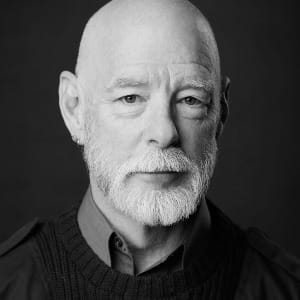
GEOFFREY ALM
Fight Director (Seattle, WA)
Previously at Seattle Opera: Jubilee (’24); A Thousand Splendid Suns (’23); Rigoletto (’19)
Seattle Opera Debut: War and Peace (’90)
Engagements: Fat Ham, The Skin of Our Teeth (Seattle Rep); Sweat (ACT Theatre); Macbeth (Seattle Shakespeare Company); Camelot (Village Theatre)

MICHAELLA CALZARETTA
Chorus Master (Muscatine, IA)
Seattle Opera Debut: The Elixir of Love (’22)
Michaella Calzaretta made her Seattle Opera debut in 2022 as the company’s new chorus master and head of music staff. Acclaimed for her high standards and superb preparation skills, Calzaretta oversees all musical activities at the company and prepares the chorus for main stage productions. In January 2024, the chorus embarked on their immensely successful first-ever tour to Mt. Vernon and Vashon Island. Recent praise includes “…continues to impress with her first-rate coaching of her singers” (Broadway World) and “The Seattle Opera Chorus…sang exuberantly and expertly” (The Seattle Times). Calzaretta is a doctoral candidate in choral conducting at Indiana University.
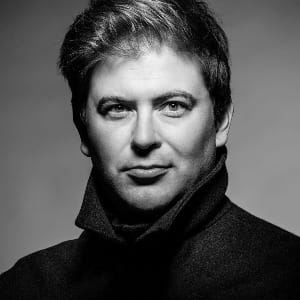
CRAIG COLCLOUGH
Baron Scarpia
Bass-baritone (Claremont, CA)
Seattle Opera Debut
Engagements: Lord Capulet, Romeo and Juliet, Leporello, Don Giovanni (LA Opera); The Dutchman, The Flying Dutchman (Göteborg Opera); Monterone, Rigoletto (Metropolitan Opera); Macbeth, Macbeth (Metropolitan Opera, Lyric Opera of Chicago, Bayerische Staatsoper); Telramund, Lohengrin (Royal Opera House)

BRENNA CORNER
Director (Atlanta, GA)
Seattle Opera Debut: Don Giovanni (’21)
Engagements: Il trovatore (Washington National Opera); Carmen (Calgary Opera, Des Moines Metro Opera); Lucia di Lammermoor (New Orleans Opera); Hansel and Gretel (Kentucky Opera)
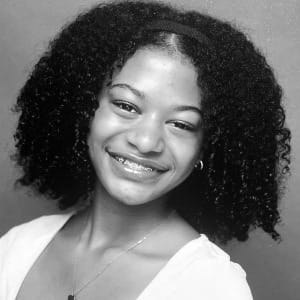
GRACE ELAINE FRANCK-SMITH
Shepherd Boy
Soprano (Seattle, WA)
Seattle Opera Debut: Zalmai, A Thousand Splendid Suns (’23)
Previously at Seattle Opera: Second Genie, The Magic Flute (’25)
Engagements: Soprano, i believe (Bellevue Chamber Chorus); A Sammamish Family Concert (Sammamish Symphony Orchestra); The Nutcracker (Evergreen City Ballet Orchestra); José Luis Muñoz Music Academy; Seattle Historical Arts for Kids
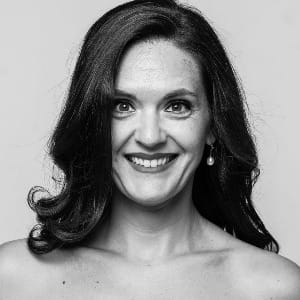
VANESSA GOIKOETXEA
Floria Tosca
Soprano (Durango, Spain)
Seattle Opera Debut: Micaëla, Carmen (’19)
Previously at Seattle Opera: Alcina, Alcina (’23); Donna Anna, Don Giovanni (’21); Nedda, Pagliacci Highlights Recital (’20)
Engagements: Mimì, La bohème (Semperoper Dresden); Sabina, Hadrian (Teatro Real); Rosario, Goyescas (Opéra de Limoges); Floria Tosca, Tosca (Teatro de la Maestranza); Rusalka, Rusalka (Opéra de Nice); Amalia, Alfredo il grande (Donizetti Opera Festival)
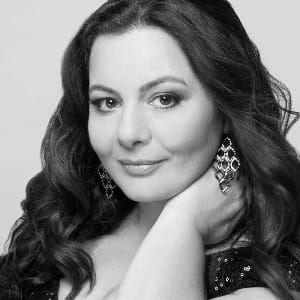
LIANNA HAROUTOUNIAN
Floria Tosca
Soprano (Yerevan, Armenia)
Seattle Opera Debut: Cio-Cio-San, Madame Butterfly (’17)
Engagements: Cio-Cio-San, Madame Butterfly (Royal Opera House, Teatro Regio, Teatro Carlo Felice, Teatro Real Madrid); Adriana Lecouvreur, Adriana Lecouvreur (Teatro Cervantes Malaga); La Gioconda, La Gioconda (Teatro di San Carlo)

BARRY JOHNSON
Sacristan
Baritone (Douglas, AZ)
Seattle Opera Debut: Marco, Gianni Schicchi (’90)
Previously at Seattle Opera: Antonio, The Marriage of Figaro (’22); Benoit/Alcindoro, La bohème (’21); Marullo, Rigoletto (’19)
Engagements: Capulet, Romeo and Juliet (Vashon Opera); Stage Director, Tacoma Method (Tacoma Opera), Amahl and the Night Visitors, HMS Pinafore, Don Giovanni (Pacific Lutheran University)
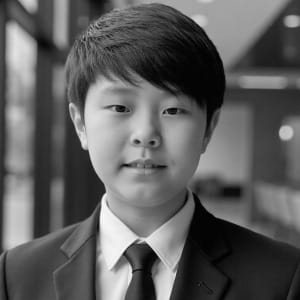
ANTHONY E. KIM
Shepherd Boy
Soprano (Bellevue, WA)
Seattle Opera Debut: Third Genie, The Magic Flute (’25)
Engagements: Soloist, Readings & Carols (St. James Cathedral); Soloist, Fauré Requiem (Sacred Heart Church); Soloist, Jó pásztorok, Soprano, Christmas in Vienna, Soloist, Every Year Again, Soloist, UN International Energy and Climate Forum, Soloist, A Tribute to Vienna, Soprano, 525th Anniversary of Vienna Boys Choir (Vienna Boys Choir)
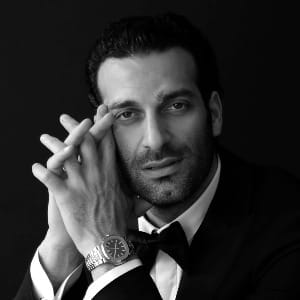
RAME LAHAJ
Mario Cavaradossi
Tenor (Istog, Kosovo)
Seattle Opera Debut
Engagements: Alfredo, La traviata (Opera Australia Sydney, Teatro Comunale di Bologna); Mario Cavaradossi, Tosca (Opera Hong Kong); Rodolfo, La bohème, Edgardo, Lucia di Lammermoor (Opera Wroclawska); Corrado, Il corsaro (Teatro Petruzzelli di Bari); Soloist, Plácido Domingo Thank You, Hamburg Gala Concert (Elbphilharmonie Laeiszhalle Hamburg); 3 Tenors Gala Concerts (Ankara, Istanbul, Trondheim, Kristiansand)

ADAM LAU
Cesare Angelotti
Bass (San Francisco, CA)
Seattle Opera Debut: Makoto Kobayashi, An American Dream (’15)
Previously at Seattle Opera: Narbal, Les Troyens in Concert (’25); Soloist, 60th Anniversary Concert & Gala (’24); Angelotti, Tosca (’21)
Engagements: Colline, La bohème (Opera Philadelphia); Dr. Grenvil, La traviata (Metropolitan Opera); Sarastro, The Magic Flute (Ravinia Festival); Soloist, Verdi’s Requiem (Carnegie Hall); Figaro, The Marriage of Figaro (Utah Opera); Sam, Un ballo in maschera (San Francisco Opera)
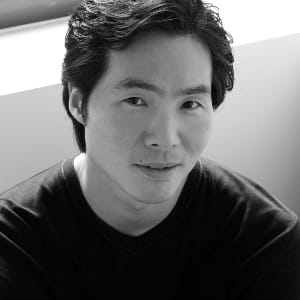
YONGHOON LEE
Mario Cavaradossi
Tenor (Seoul, South Korea)
Seattle Opera Debut: Samson, Samson and Delilah in Concert (’23)
Engagements: Dick Johnson, La fanciulla del West (Vienna State Opera, Bavarian State Opera); Luigi, Il tabarro (Bavarian State Opera); Otello, Otello (Bavarian State Opera); Calaf, Turandot (Semperoper Dresden, Washington National Opera, Bavarian State Opera); Andrea Chénier, Andrea Chénier (Opernhaus Zurich)

ŽELJKO LUČIĆ
Baron Scarpia
Baritone (Zrenjanin, Serbia)
Seattle Opera Debut
Engagements: Baron Scarpia, Tosca (Metropolitan Opera, Deutsche Oper Berlin); Rigoletto, Rigoletto (Opéra Bastille); Macbeth, Macbeth (Bayerische Staatsoper); Iago, Otello (Metropolitan Opera); Giorgio Germont, La traviata (Royal Opera House)

ANDREW MARLAY
Costume Designer
Seattle Opera Debut: Tosca (’15)
Engagements: Tosca, Cavalleria rusticana, Pagliacci, The Music Man (New York City Opera); The Magic Flute (Santa Fe Opera); Strider, Truly Blessed (Broadway); Heartbreak House, Fallen Angels, Rosencrantz and Guildenstern Are Dead, Man and Superman (Off-Broadway)

JOHN MARZANO
Spoletta
Tenor (Tacoma, WA)
Seattle Opera Debut: Giuseppe, La traviata (’17)
Previously at Seattle Opera: Beppe, Pagliacci (’24); Soloist, Divo to Diva: Anita Spritzer in Recital (’24); Oronte, Alcina (’23)
Engagements: Alfredo, La traviata (Vashon Opera); Tenor, Pride Pops (Seattle Symphony); Andronico, Bajazet (Portland Opera); Camille de Rosillon, The Merry Widow (Tacoma Opera)

JULIA MEYERING
Youth Chorus Master (Kent, WA)
Seattle Opera Debut: Pagliacci (’24)
Previously at Seattle Opera: The Magic Flute (’25)
Julia Meyering made her Seattle Opera singing debut in 2018 as a chorus member in Porgy and Bess (’18). She is thrilled to be joining Seattle Opera as Youth Chorus Master. Currently, she serves as choral director at Tillicum Middle School in Bellevue, WA, where her choirs have won numerous regional, national, and international choir competitions.

ASHLEE NAEGLE
Wigs, Hair, & Makeup Designer (Las Vegas, NV)
Seattle Opera Debut: Hair and Makeup Intern, Julius Ceasar (’07)
Ashlee Naegle made a name for herself early on in her career by mastering the dying art of wig building. She created and designed for several companies around town until the Seattle Opera created an in-house Hair and Makeup Designer position for her in 2017. During her time as the in-house Hair and Makeup Designer, she has built a sizable wig collection, built a department, and set high standards for wigs, hair and makeup. With each production, her designs are custom built for the performers and their characters to create a believable façade for the audience as well as to complement the costumes and production as a whole.

MICAH PARKER
Jailer
Baritone (Bremerton, WA)
Seattle Opera Debut
Engagements: The Pearl Fishers (Puget Sound Concert Opera)
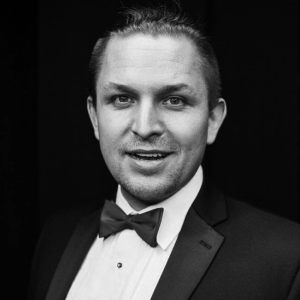
ILYA SILCHUKOU
Sciarrone
Baritone (Minsk, Belarus)
Seattle Opera Debut
Engagements: Huntsman, Rusalka (Teatro alla Scala); Prince Yeletzky, Queen of Spades (Sofia Opera); Dandini, Cinderella (Sofia Opera, Opéra National de Montpellier); Simeon, L’Enfant Prodigue (Tacoma Opera); Belcore, The Elixir of Love (Théâtre du Capitole de Toulouse)
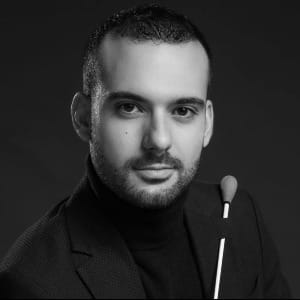
LEONARDO SINI
Conductor (Sassari, Italy)
Seattle Opera Debut
Engagements: Conductor, Aida (Deutsche Oper Berlin, Semperoper Dresden); Otello (Staatstheater Hannover); Il trovatore, Il trittico, Lucia di Lammermoor (Staatsoper Hamburg); La bohème (Muscat Royal Opera House Oman); La traviata (Semperoper Dresden); Carmen (Royal Opéra de Wallonie Liège, Arena di Verona); The Elixir of Love (Opéra national de Paris)
ERCOLE SORMANI SCENEOGRAPHY
Set Design (Milan, Italy)
Founded in 1838, the scenic studio created by Ercole Sormani built opera scenery for La Scala during the days of Verdi and Puccini and to this day upholds the grand tradition of representational scenic painting. Glynn Ross, Seattle Opera’s founding director, purchased these Tosca sets in the 1960s. Refurbished over the years by Seattle Opera Scenic Studios, they have often transformed our stage and that of many other American theaters into Napoleonic Rome.
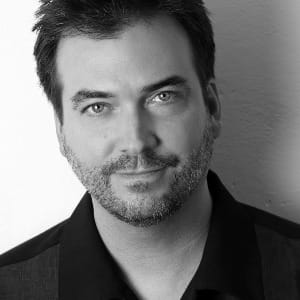
ROBERTSON WITMER
Sound Designer (Seattle, WA)
Seattle Opera Debut: The Falling and the Rising (’19)
Previously at Seattle Opera: The Magic Flute (’25); Jubilee (’24); X: The Life and Times of Malcolm X (’24)
Engagements: Music Director/Accordion, Go, Dog. Go! (Chicago Children’s Theatre); Sound Designer, The Color Purple (Village Theatre), Twelfth Night (ACT Theatre); Composer, Peril in the Alps (Laguna Playhouse)

CONNIE YUN
Lighting Designer (East Lansing, MI)
Seattle Opera Debut: The Magic Flute (’06)
Previously at Seattle Opera: Freddie & Kunal in Concert (’25); Samson and Delilah in Concert (’23); The Marriage of Figaro (’22)
Engagements: Lighting Designer, La bohème (Opera Colorado); The Barber of Seville (Madison Opera); Salome, Pelléas & Mélisande (Des Moines Metro Opera); María de Buenos Aires (The Florentine Opera); Madame Butterfly (Opera Philadelphia)
Chorus
Soprano
Clarice Alfonso
Jennifer Campbell
Karen Early Evans
Sarah Fletcher
Dana Johnson Robbins
Linda Mattos
Ibidunni Ojikutu
Eleanor Stallcop-Horrox
Shelly Traverse
Amy Van Mechelen
Lyndee White
Eliza Woodyard
Alto
Lorraine Burdick
Erica Convery
Anneliese Floyd
Erin Hanson
YeonSoo Lee
Dawn Padula
Elizabeth Peterson
Melissa Plagemann
Bianca Raso
Meg Stoltz
Heidi Vanderford
Lucy Weber
Tenor
Nathan Barnes
Hugh Davis
Andrew Etherington
Kenneth Foster
James Galbraith
Tim Janecke
Eric Angus Jeffords
Ian Loney
Carson Lott
Korland Simmons
Jon Suek
Stephen Wall
Bass
Craig Grayson
Glenn Guhr
Zachary Martin
Michael Monnikendam
Micah Parker
Julian Reisenthel
Will Schlott
Jonah Spool
Isaiah Utto-Galarneau
Robin Wyatt-Stone
Youth Chorus
Molly Jayne Aidlin
Autumn Helene Chociej
Avyana Ewing
Grace Elaine Franck-Smith
Jazlyn Frenette
Sophie Gardella
Jasmine Hall
Anthony E. Kim
Zina Koroleva
Victoria Le Metzger
Thaddeus Meyering
Chloe Jean Minaker
Sanne Christine Smith
Anouch Torossian
Natalie Wu
Supernumeraries
Allen Armstrong
Tim Barrick
Kyle Cable
Harmony Diamond
Richard Eidal
Stone Fennell
John Gardner
Glenn Hare
Jimmy Harrop
Luther M. Hintz
David Hsieh
Timothy Michael Keller
Dan Lathrop
David Lee
Gary Lee
Rich Lewis
Charles Liu
Sappho MacDonald
Daniel Monk Romer
John Smilgin
Kevin Swantek
John Weintraub
Steven Willey
Orchestra
Violin I
Noah Geller, Concertmaster
Eduardo Rios, Asst. Concertmaster
Jacqueline Audas
Jennifer Bai
Timothy Garland
Leonid Keylin
Wayne Lee
Andy Liang
Mikhail Shmidt
John Weller
Jeannie Wells Yablonsky
Ilana Zaks
Violin II
Elisa Barston, Principal
Kathleen Boyer, Asst. Principal
Evan Anderson
Brittany Breeden
Stephen Bryant
Xiao-po Fei
Artur Girsky
Andrew Yeung
Tamas Kocsis
Caitlin Kelley
Viola
Sayaka Kokubo, Principal
Mara Gearman, Asst. Principal
Timothy Hale
Olivia Chew
Wesley Dyring
Gerald Liu
Rachel Swerdlow
Kayleigh Miller
Cello
Efe Baltacıgil, Principal
Eric Han, Asst. Principal
Katherine Audas
Roberta Downey
Walter Gray
Sunnat Ibragimov
David Sabee
Charles Jacot
Double Bass
Joseph Kaufman, Principal
Will Langlie-Miletich, Asst. Principal
Jonathan Burnstein
Sam Casseday
Jennifer Godfrey
Todd Larsen
Flute
Jeffrey Barker, Principal
Bridget Pei
Zartouhi Dombourian-Eby
Piccolo
Bridget Pei
Zartouhi Dombourian-Eby
Oboe
Ben Hausmann, Principal
Winnie Lai
English Horn
Stefan Farkas, Principal
Clarinet
Benjamin Lulich, Principal
Laura DeLuca
Eric Jacobs
Bass Clarinet
Eric Jacobs
Bassoon
Seth Krimsky, Principal
Paul Rafanelli
Contrabassoon
Kipras Mažeika
Horn
Mark Robbins, Principal
Jenna Breen
John Turman
Danielle Kuhlmann
Trumpet
Alexander White, Principal
Michael Myers
Sarah Viens
Trombone
Ko-ichiro Yamamoto, Principal
Carson Keeble
Eden Garza
Cimbasso
John DeCesare, Principal
Timpani
Eric Schweikert, Principal
Percussion
Michael Werner, Principal
Jonathan Wisner
Matt Decker
Harp
Valerie Muzzolini, Principal
Organ/Celeste
Jay Rozendaal
Keyboard Bells
David McDade
Personnel Manager
Constance Aguocha
Assistant Personnel Manager
Keith Higgins
Rotating members of the string section are listed alphabetically.
Letters
From the General & Artistic Director

Welcome to the final opera of our very successful 2024/25 season! Can you think of a better closer than Puccini’s gripping Tosca in a sumptuously traditional production that befits this melodramatic masterpiece?
On the subject of opera productions, I have often been asked why certain operas lend themselves better to more adventurous interpretations than others. Our most recent production of The Magic Flute, for example, pushed Mozart’s opera into an unexpected and fantastical world with dazzling video work, something that I personally found thrilling and completely appropriate to the original fairytale setting of the opera. While there were a few detractors, our audiences were overwhelmingly thrilled to go along for the ride. Would a production like that work for Tosca? I’m sure in the right hands it could, but the world of Tosca is so deeply rooted in historical and locational specifics that I wonder what the point would ultimately be. Therefore, I think rather that a solidly traditional (in the best sense of the word), hand-painted production of Puccini’s masterpiece seems completely appropriate, if not spot-on. What I find so marvelous about opera is that there are endless ways to interpret these classic titles, and they can inspire some really fascinating conversations. I’m often asked this question: Is opera a musically driven art form or a visually and dramatically driven one? My answer: Both!
As I think about my connections to Tosca, I remember that it was the first opera recording I ever purchased. It featured the great Leontyne Price, Plácido Domingo, and Sherrill Milnes. As a teenager, I drove my family crazy by playing it over and over while singing all the parts (even though I had no idea what the Italian actually meant). Then in the fall of 2022, while studying Italian in Rome for several weeks, finally I UNDERSTOOD what Illica and Giacosa’s libretto truly meant! More interestingly for me was exploring the actual locales where the opera takes place, especially the hard-to-get-into Palazzo Farnese. To this very day, perhaps like you, I consider Tosca one of my favorite Puccini titles and the perfect “gateway” opera for the opera-curious.
I would like to take a moment to thank the Seattle Opera Board of Directors, our supporters, staff, and crew at McCaw Hall. This is an incredibly hard-working team dedicated to bringing great opera to our community. I am also grateful for our unparalleled artistic collaborators, the members of Seattle Symphony. Above all, let me express my appreciation to you, our audience, for being on this operatic journey together with us. I look forward to seeing you next season for more exciting performances.
With appreciation and best wishes,
James Robinson
General and Artistic Director
From the President
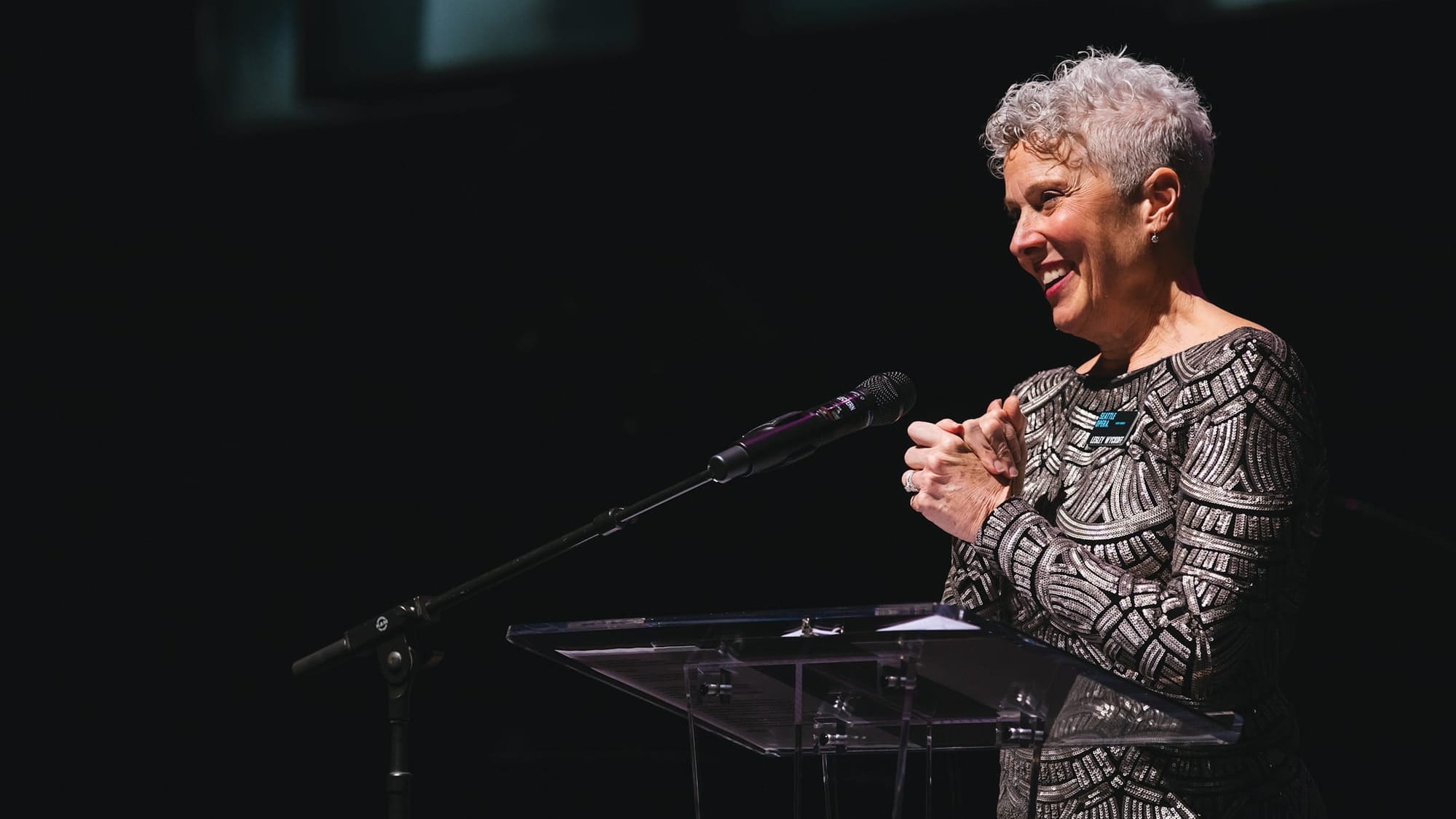
Welcome to Tosca, the electrifying culmination of Seattle Opera’s 2024/2025 season!
An opera season is like a musical opus: a collection of compositions that are varied but share a theme, like a symphony that travels through key and tempo changes until it reaches its apogee.
This season at Seattle Opera has felt the same way, beginning and ending with spice, traversing a broad musical landscape along the way, and thrilling audiences at each turn. From a hot Pagliacci, through a soul-filling Jubilee, a provocative Lucidity, a virtuosic Les Troyens in Concert, a groundbreaking and wildly successful The Magic Flute, to this production of Puccini’s riveting Tosca, it’s been quite a ride!
Next season promises many pleasures and and a lot that is new to Seattle, starting with our first-ever Gilbert & Sullivan: The Pirates of Penzance, sung with full operatic abandon. We follow that with Daphne in Concert, a vocal and orchestral extravaganza. Next is the Seattle debut of the powerful contemporary opera Fellow Travelers. Finally, we finish with a flourish in Carmen, featuring the fabulous J’Nai Bridges and Sasha Cooke. Season subscriptions are on sale now at the table located at the top of the Grand Staircase during intermission.
All that we do at Seattle Opera, from the grandest of operas at McCaw Hall to intimate recitals at the Opera Center, depends upon the enthusiasm of our loyal ticket-buying audience and the generous support of our donors. You will note that this last program of the season includes a listing of our donors from July 1, 2023, through March 28, 2025, at all levels: individual, institutional, and planned giving Encore Society. Thank you! Every single ticket purchased, and every single dollar invested in either Seattle Opera or the Seattle Opera Foundation keeps us singing and grateful.
Personally, my five seasons as President of the Seattle Opera Board of Directors has also been quite a ride. Begun on the cusp of the pandemic, extending through the 2021/22 streaming season that arose like a phoenix from the ashes of COVID, through a challenging and successful rebuild in the current post-pandemic environment, and in welcoming our new General and Artistic Director, James Robinson, my tenure has not been…typical. But through it, I’ve been astounded by the relevance, durability, and even necessity of opera to serve and hearten our stakeholders under intense pressure. I’ve been thrilled by the art we are making. I’ve been gratified by the returning opera lovers and new audience members we are seeing in McCaw Hall. I’ve been humbled by the resilience and creativity of our company: our board members and staff. And by you: our enthusiastic audience and donors.
Now, I place the leadership reins into the very capable hands of our new President of the Board of Directors, Jonathan Rosoff, who has been preparing for this role his entire life. I mean that literally…ever since he appeared in the children’s chorus at New York’s Metropolitan Opera. More recently, for the last 16 years, he has been a highly engaged and effective board leader, especially focusing on marketing and strategic development, serving on the Revenue and Long-Range Planning committees as well as participating in the search committee for Christina Scheppelmann and chairing the search for James Robinson.
Today, with Tosca, we reach the climax of the 2024/25 season. As for tomorrow, with Jonathan at the ready, James gaining a firm footing in the company and community, and all of you joyously here, I could not be more excited about the future of Seattle Opera.
Thank you!
Lesley Chapin Wyckoff, President
Seattle Opera Board of Directors
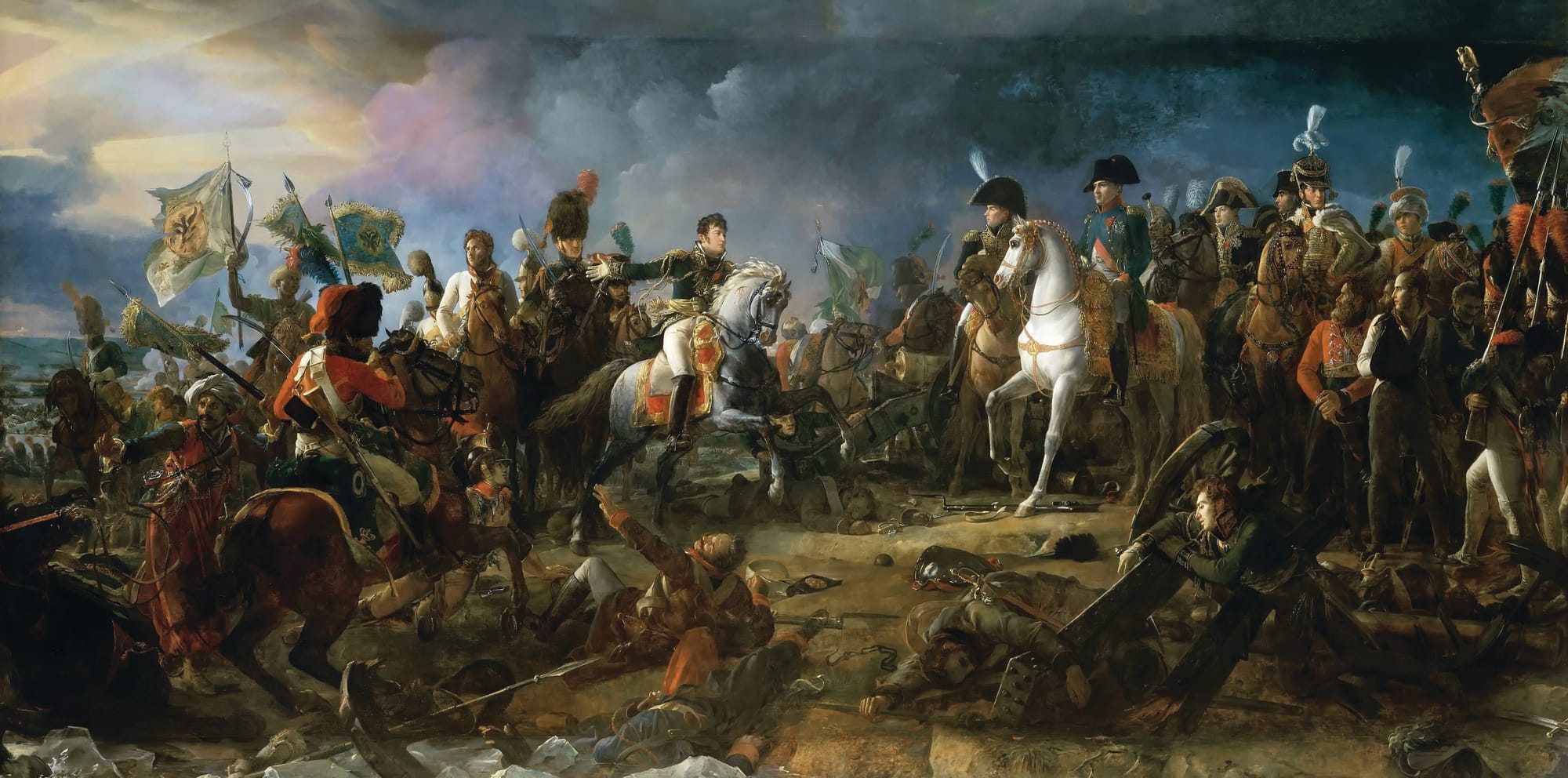
When in Rome
A historian considers the characters of Tosca
By Susan Nicassio
Above: Battle of Austerlitz, 2 December 1805 by François Gérard, Palace of Versailles.
With some operas, the exact setting, in terms of time and place, doesn’t much matter. Not so in Tosca. The historic context of Rome during the Napoleonic wars is as integral to the story as Tosca’s jealousy and Scarpia’s cunning. We meet Tosca on a particular day in history—June 17, 1800—as Napoleon’s army encroaches into Italy and pushes back the Austrians, who were allied with the conservative forces that governed Rome. The fictional characters of Tosca, originally conceived in the play by Victorien Sardou, are as true to their time as any you’ll find on the opera stage. Let’s consider them in the order we’re about to meet them.
In Sardou’s play, Cesare Angelotti comes with a colorful backstory involving several nonfictional figures. In 1799, the Kingdom of Naples crushed the year-old “Roman Republic” and re-established the Papal States. As the opera begins, Angelotti, Consul of the short-lived Roman Republic, has escaped from prison, where he was being kept until he could be sent back to Naples to be hanged, mostly for the gratification of the British Admiral Horatio Nelson’s mistress, Lady Emma Hamilton. Angelotti had known (in the biblical sense) the future Lady Hamilton when she was a London prostitute named Emma Lyons, and had the bad taste to announce that fact at a formal State dinner. Lady Emma and her close friend, Queen Maria Carolina of Naples, wanted revenge, so the Queen sent Scarpia to Rome not only to “restore order,” but also to make sure that Angelotti hangs.
Julia, Marchesa Attavanti: Angelotti’s sister appears only as a portrait, but she is the all-important peg on which the action hangs. She arranged Angelotti’s escape and told him where in the church he would find the key to her husband’s family chapel, writing something seemingly innocuous, such as “the key to our hope lies at the feet of the Madonna.” Locked private chapels, unknown in modern American churches, were common: noble families would pay for their construction and had control of the keys that would open them. Mario’s easily recognizable painting of the lovely Mrs. Attavanti as Mary Magdalene sparks Tosca’s jealousy, which leads directly to tragedy.
“The Sacristan”: Probably not a sacristan at all (that was a prestigious job). He’s more of a janitor, expressing the lower-class contempt for foreigners and for rich, liberal young men who dress well, have expensive mistresses, and don’t go along with the local point of view. No one resented French liberals more than the poor of Rome.
Mario Cavaradossi: In Sardou’s play, we learn he is the French-born son of an exiled Roman father and a Parisian mother, and heir to a titled Roman grandfather (thus his title of “Cavaliere,” or Sir). A student of the famous Jacques-Louis David, Cavaradossi would have put in some time in the French revolutionary army as a teenager—every able-bodied male over 14 in France either volunteered or was drafted in the wars of the early 1790s (this helps explain his intransigence, or courage, in Act Two). His first words—“What are you doing?”—indicate he is so far outside the Roman mainstream that he does not recognize the most common of Roman Catholic devotions, the mid-day Angelus (unless, of course, he is just tweaking the Sacristan in order to enjoy his reaction).
Floria Tosca: Adored star of the Roman stage, conducting an inappropriate affair with the French-born liberal Cavaradossi. A foundling, she has risen from the bottom of society to its pinnacle quite suddenly, and it shows. She is one tough lady, and capable of murder if pushed too far. But her veneer of sophistication seems to be laid over a deep insecurity. God is her adopted father and the Virgin Mary her indulgent mama. She assumes that they will overlook the sulfurously passionate affair she is having with an openly irreligious enemy alien. She adores Cavaradossi, but doesn’t trust him.
Baron Vitellio Scarpia: A Sicilian courtier at the court of Naples. Sardou compares him to Neapolitan bandit-patriots (on the Royalist side) like Fra Diavolo. Scarpia seems to dabble in rape and sadism, but only as hobbies: his main focus is getting and keeping power. He is perfectly justified in condemning Cavaradossi, who is obviously guilty of treason in wartime.
Spoletta: A thoroughly disreputable sbirro (pejorative slang for cop), a toady by nature and a bully when he can get away with it. The Roman sbirri were a scruffy bunch even by eighteenth-century standards, and Spoletta seems to be a first-class example. He is probably Neapolitan or Sicilian, brought along to Rome by his boss Scarpia, who treats him with utter contempt and overt threats of casual violence—he threatens to have him strung up for not finding Angelotti as ordered. When Spoletta is in a tight spot, he turns to the Jesuit’s Saint Ignatius, whom he seems to regard as the patron saint of police spies.
Sciarrone: In Sardou’s play, a respectable Neapolitan army captain, Sciarrone is reduced to a flunky in the opera. His main jobs seem to be serving dinner, bringing mash notes to unwilling ladies, and transmitting orders from his boss to torturers and others too lowly to be addressed directly by the Baron.
A Shepherd Boy: The only truly Roman character in the whole opera. While herding sheep under the walls of the Castel Sant’Angelo, he sings a simple little song in the Roman dialect (which bore, and still bears, only a slight resemblance to Italian).
Judge, Jailer, and Executioners:
Torture was legal in Rome in 1800 (a later pope would outlaw it) and would have required the presence of an officer of the court. But in 1800, the only legal technique was a sort of sleep deprivation—hardly dreadful enough for Scarpia. Roberti in Tosca is not a very skilled torturer; his paziente is not supposed to pass out. The Jailer keeps track of prisoners (and delivers final messages for an appropriate tip). The firing squad would have been ordinary soldiers, probably Neapolitan draftees.
To Puccini’s credit, we don’t need to be historians in order to appreciate Tosca. The music and drama are crystal clear. But Puccini’s work accurately reflects a complicated historical reality—one that adds vitality and meaning to the opera.
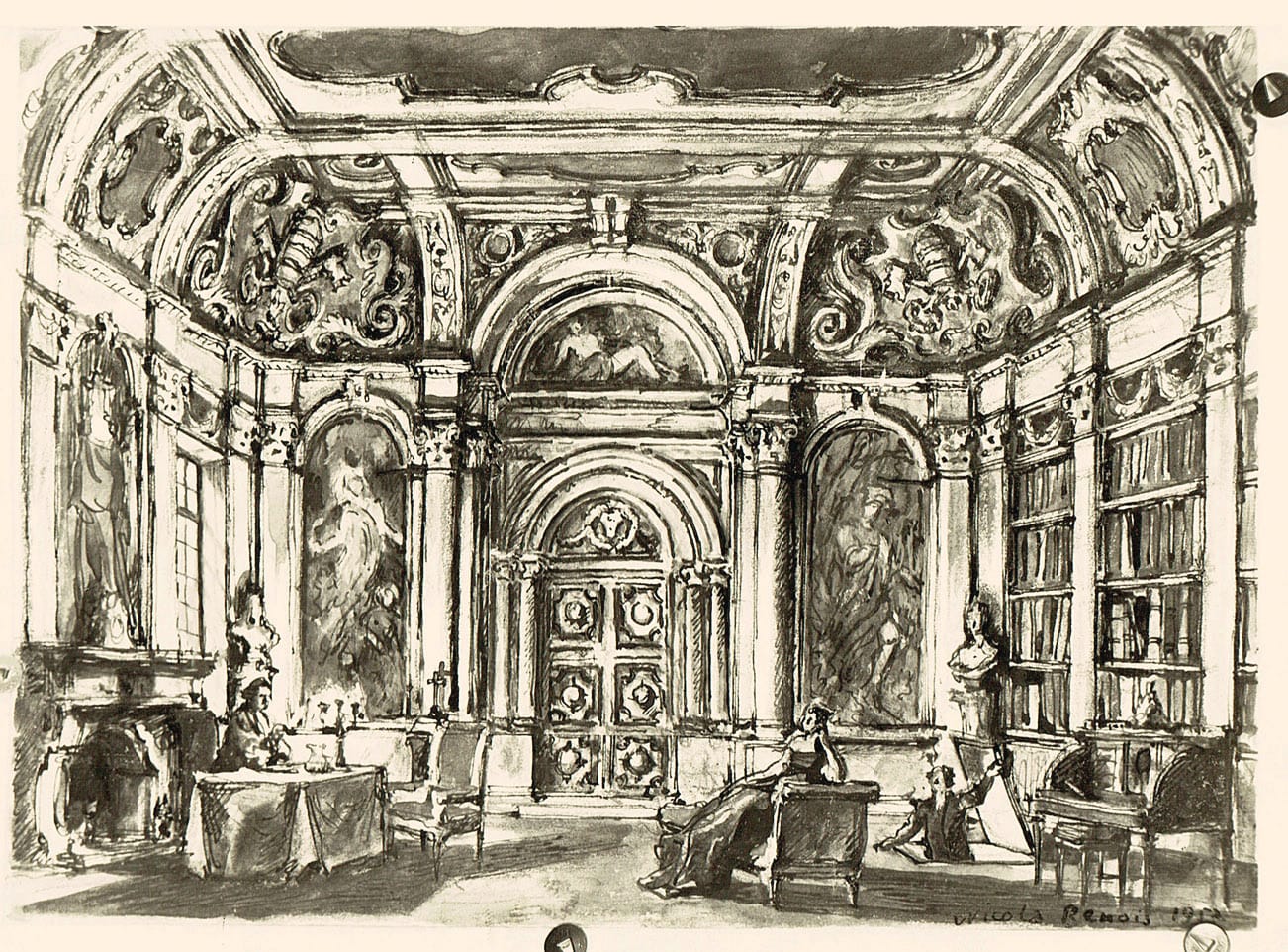
The Fascinating History of a Seattle Opera Set
By Jonathan Dean
Above: Scenic sketch for Tosca Act Two in ink by Nicola Benois, 1952.
We’re playing Tosca on backdrops which are a work of art unto themselves. Glynn Ross, Seattle Opera’s first General Director, purchased these Tosca sets in 1969 from Milan’s Sormani workshop. Known nowadays as Sormani Cardaropoli Scenography, that firm was founded in 1838 by Ercole Sormani to design and build opera scenery for La Scala and other theaters.
Italian opera was in transition in 1838: Bellini had recently died, Donizetti was about to abandon Italy for Paris, tenors were now singing high Cs in chest voice, and the young Giuseppe Verdi had just moved to Milan. Over the coming decades, as bel canto opera transformed into a more theatrical Gesamtkunstwerk (total work of art), Sormani’s studio thrived. By the end of the century, they were creating opera and ballet sets for theaters all over Italy and abroad and had been showered with awards.
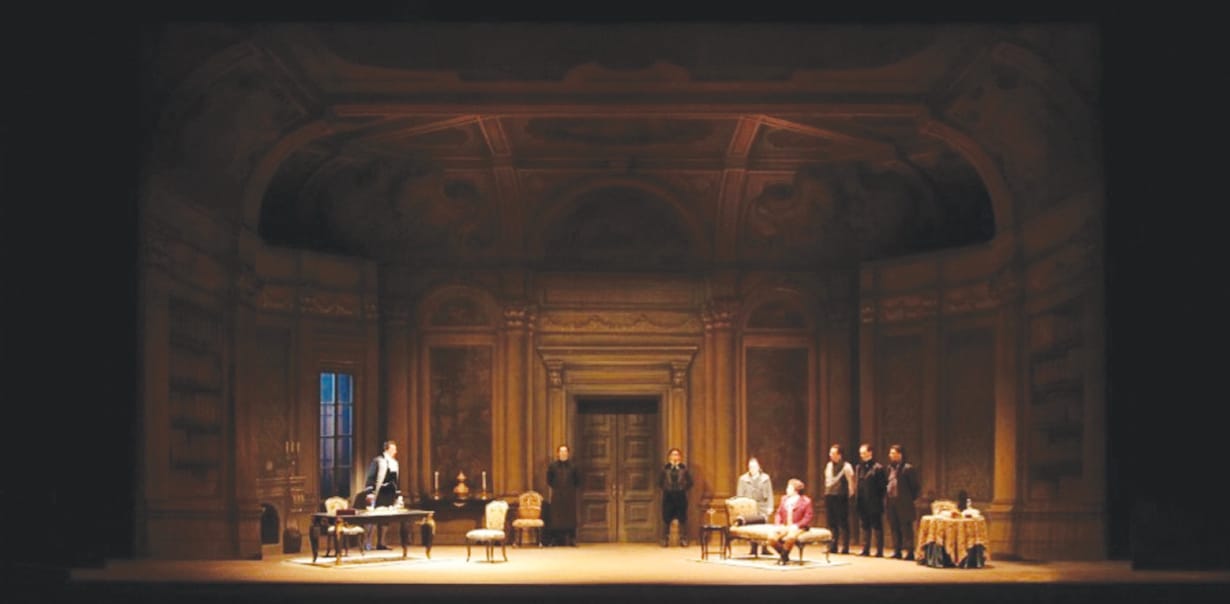
When this Tosca was designed and built in the 1950s, Sormani’s grandson—also called Ercole, Italian for “Hercules”—was running the family company, with Enzo Dehò supervising the artists. For Tosca these included designers Alessandro and Nicola Benois, a Russian father and son from an artistic St. Petersburg family. The father, originally Aleksandr Benua, first designed scenery for St. Petersburg’s Marinsky Theater before heading west with Diaghilev’s Ballets Russes in 1909. When he moved south to take a job at La Scala, his son Nicola, whom he had trained, followed him.
Nicola Benois would go on to design hundreds of opera and ballet productions. He died in Italy in 1988, as did his close friend and collaborator Ercole Sormani Jr. (whom he affectionately called “Ercoletto,” something like “Herkie”). Singers such as Zinka Milanov and Renata Tebaldi sang Tosca on La Scala’s copy of these Tosca sets.
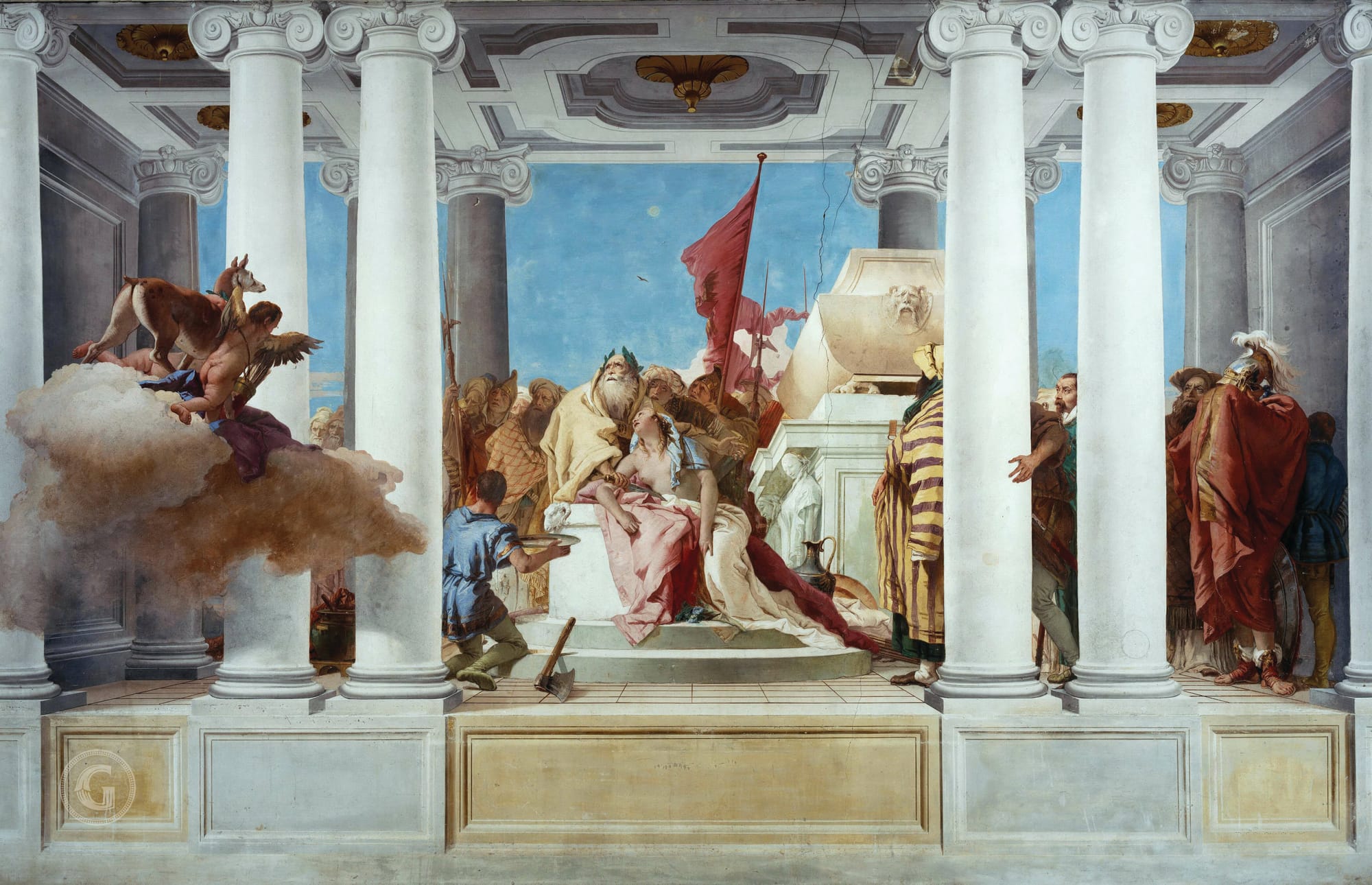
Special Effects
The designers and artists of the Sormani workshop knew how to create the illusion of depth with two-dimensional painted backdrops. For instance, Tosca’s first act church location looks much deeper than it is, thanks to the clever placement of columns and a hemispherical apse at back, which look volumetric but actually take up no space at all. In Act Two, you’d swear the ceiling of Scarpia’s dining room at the Palazzo Farnese curves out overhead and is full of decorated niches. But no—it’s just a piece of cloth.
Italian visual artists have been fooling viewers’ eyes since the days of ancient Rome; trompe l’oeil, “trick the eye,” this technique was called by an eighteenth-century French art theorist.
“Trompe l’oeil does two things at once,” says Chiyo Ishikawa, former Deputy Director for Art and Curator of European Painting and Sculpture at the Seattle Art Museum. “First, the work of art disappears, because initially you’re convinced you’re in a space. And then, when it dawns on you that it’s artifice, you marvel at this tour de force by craftsmen so skilled at creating an illusion that they’ve pulled the wool over your eyes. It’s a double-edged thing; you’re meant to do a double-take, really.”
Ishikawa saw Tosca played on these Sormani sets at Seattle Opera in 2015, lit by Connie Yun (who returns this season). “The way she lit that Act 1 church scene, there’s one lighting for the foreground, a different lighting in the middle, and it’s brighter in the apse. That helps the illusion. To be surrounded by trompe l’oeil on this immersive scale is really transporting for the viewer-listener.”
And the choice of a trompe l’oeil approach is particularly appropriate for a veristic opera about a painter and a singer—an opera that digs deep into the space between art and reality.
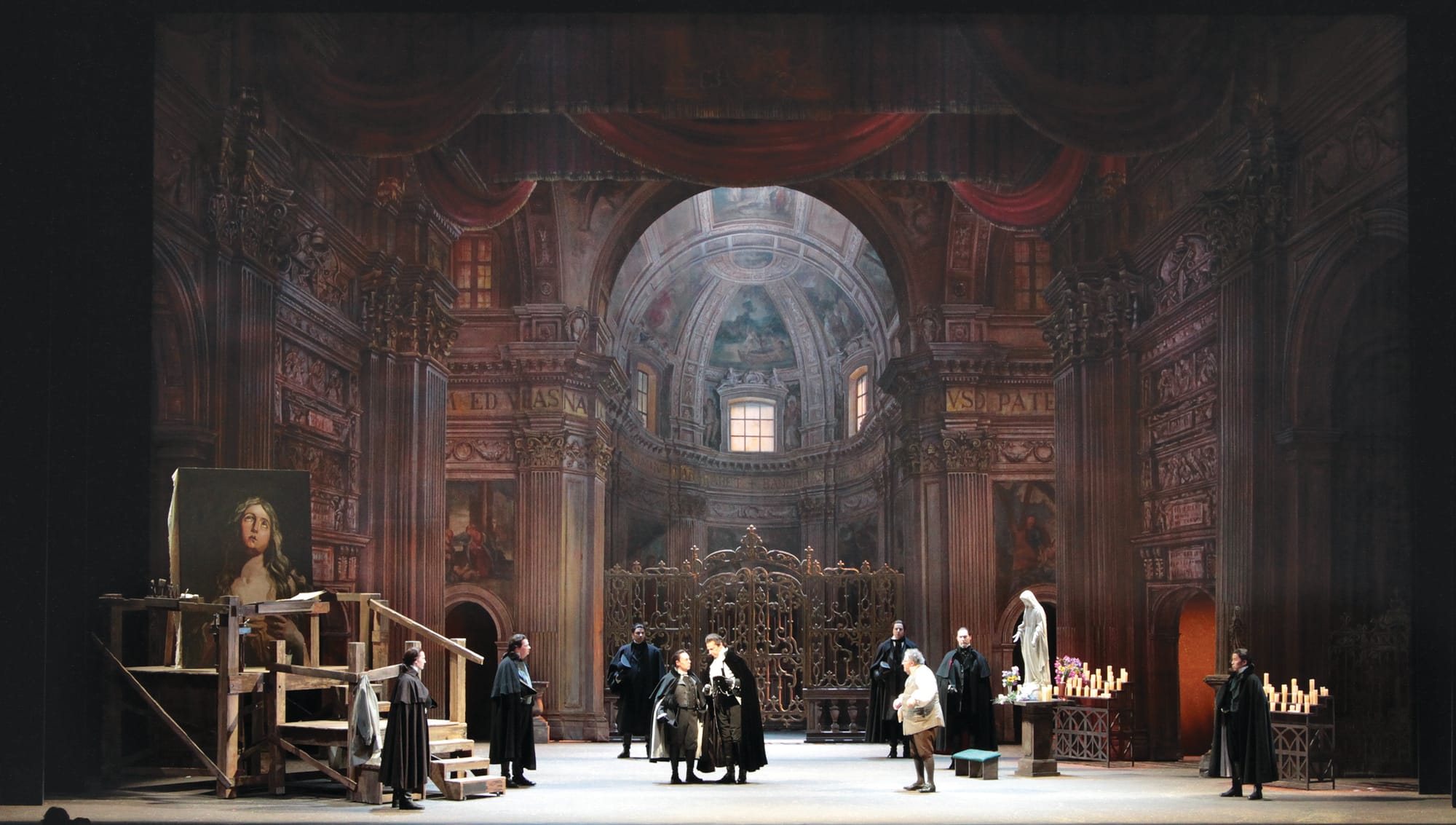
A Well-Traveled Production
Glynn Ross made a smart move when he purchased these Tosca sets. Tosca is an ever-popular “top 10” opera, and Seattle Opera has used these sets to showcase Puccini’s thriller in 1969, 1977, 1986, 2015, and now 2025. Says Robert Schaub, Seattle Opera Technical Director in the days of Speight Jenkins, “We didn’t use that Tosca in the ’90s and ’00s because it would have felt dated to audiences who (some of them) remembered the days when all opera was presented on soft scenery. But a generation later, it’s time to enjoy this again. There’s the pleasure of nostalgia, to see opera the way it was done in the days of Puccini. There’s also extraordinary artistry here. It has to be handled carefully. Connie [Yun] is smart not to focus her lighting instruments on the drops themselves. Instead, she lights the singers and allows ambient light to bounce off the floor and touch the drops gently. That makes all the difference.”
And because the shipping costs are minimal—canvas drops don’t take up much space, and the whole production fits in a single truck—dozens of American theaters have rented this Tosca from Seattle Opera over the years. Add together all those productions—five in Seattle, plus at least 30 rentals since 2000—and you start to see the impact of Ross’s purchase. Millions of opera-goers have had a chance to enjoy Tosca, sung amid these fragile pieces of cloth.
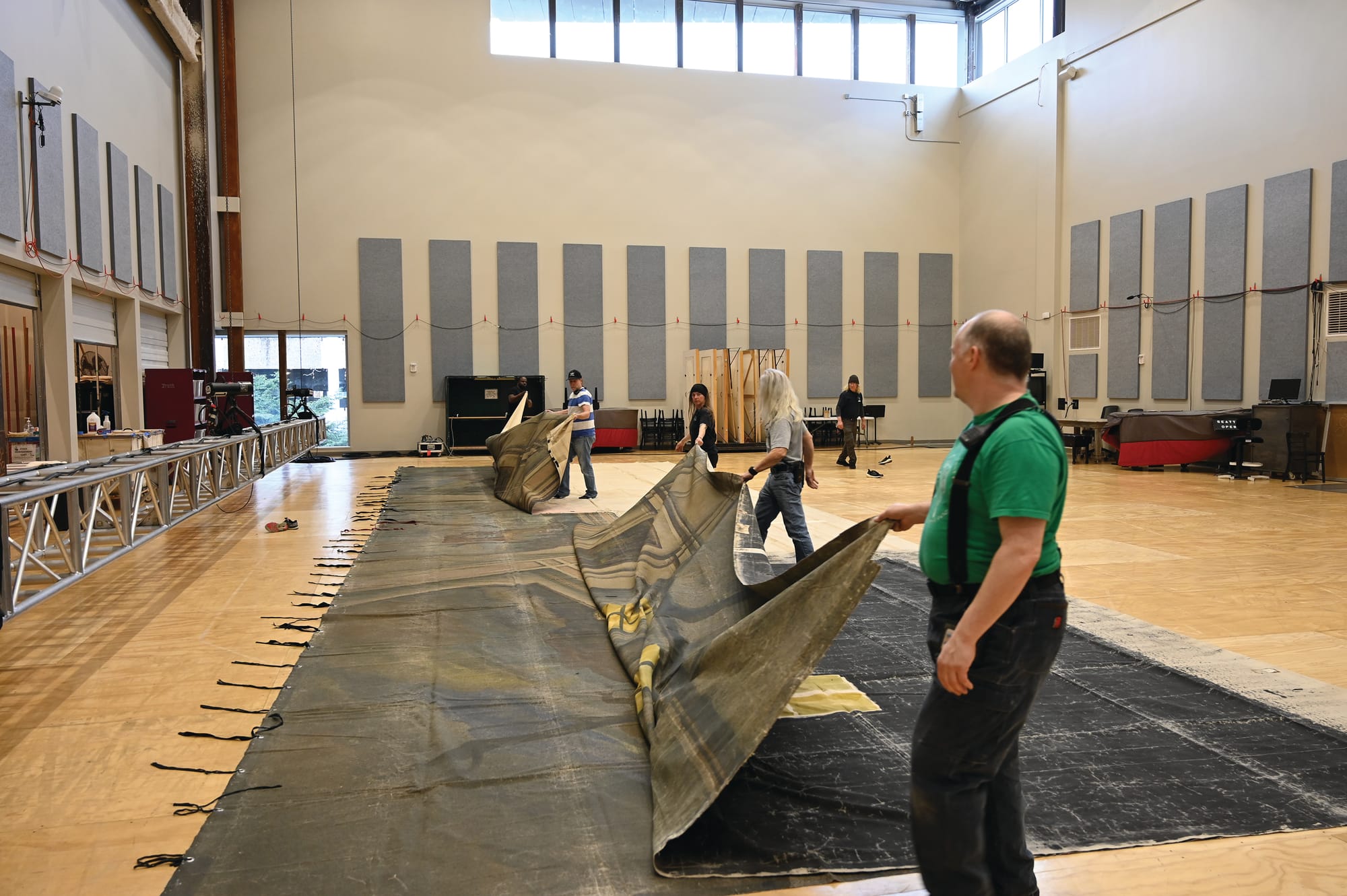
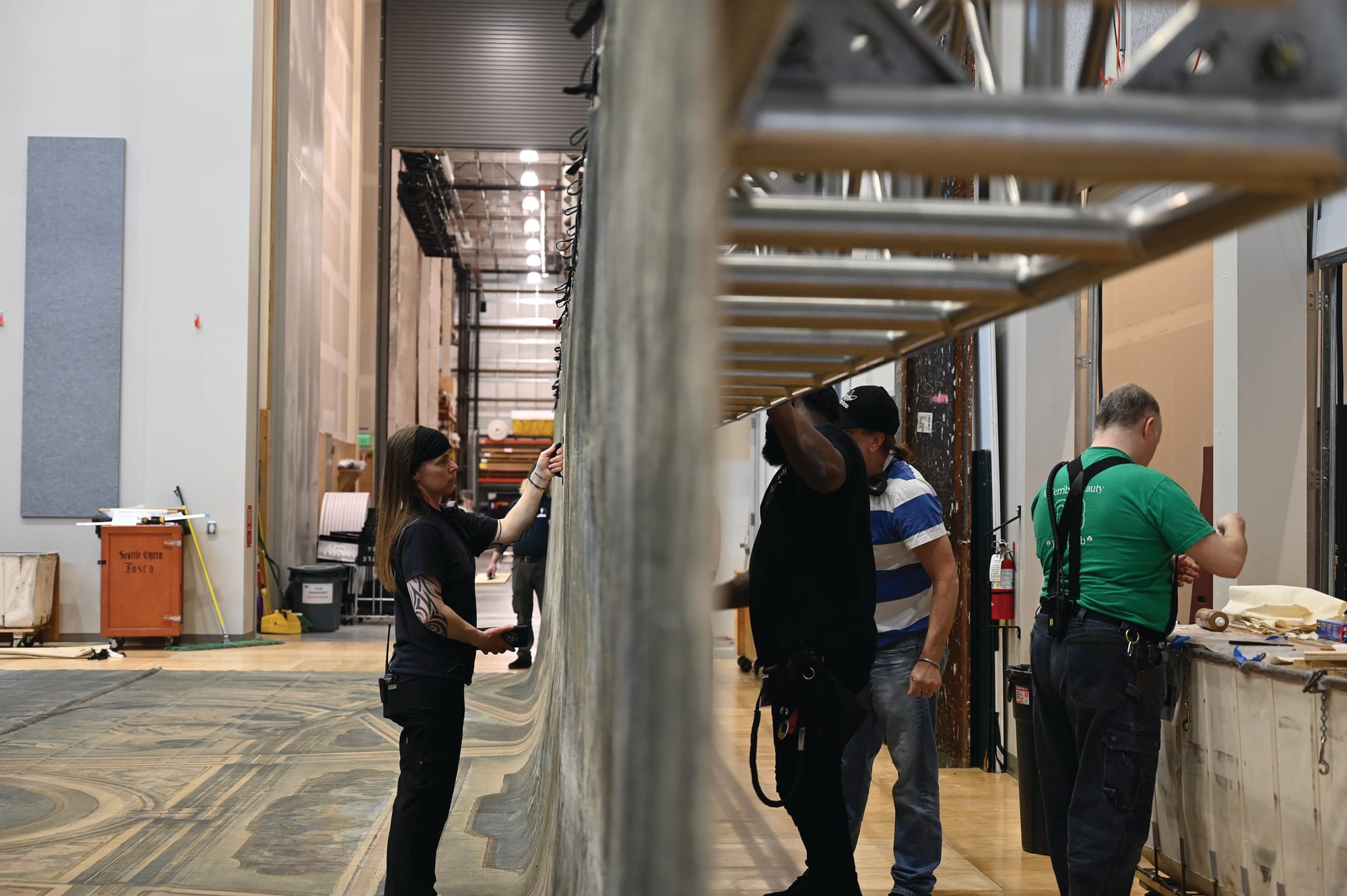
Maintaining Soft Scenery
Opera productions don’t last forever. There’s wear and tear every night, onstage. And a popular production like this one, which has been shipped all over America and Canada, is sometimes treated more roughly than is suitable for a valuable work of art. Before rehearsals began on this season’s Tosca production the experienced hands of Seattle Opera’s backstage crew gave the show a little TLC.
The enormous canvas drops were hung, to flatten out any wrinkles from how they’d been folded for shipping. Where there were small rips and tears, thin muslin patches were added from behind (and painters made sure everything looked right on the other side). Torn screens and mesh were replaced. Where there are small pieces of wood for framing, screw holes had to be filled in. According to Justin Loyd, Head Flyman at Seattle Opera, “This is a great old production, and it still has life in it. We just need to take good care of it. It’s like a part of our family.”
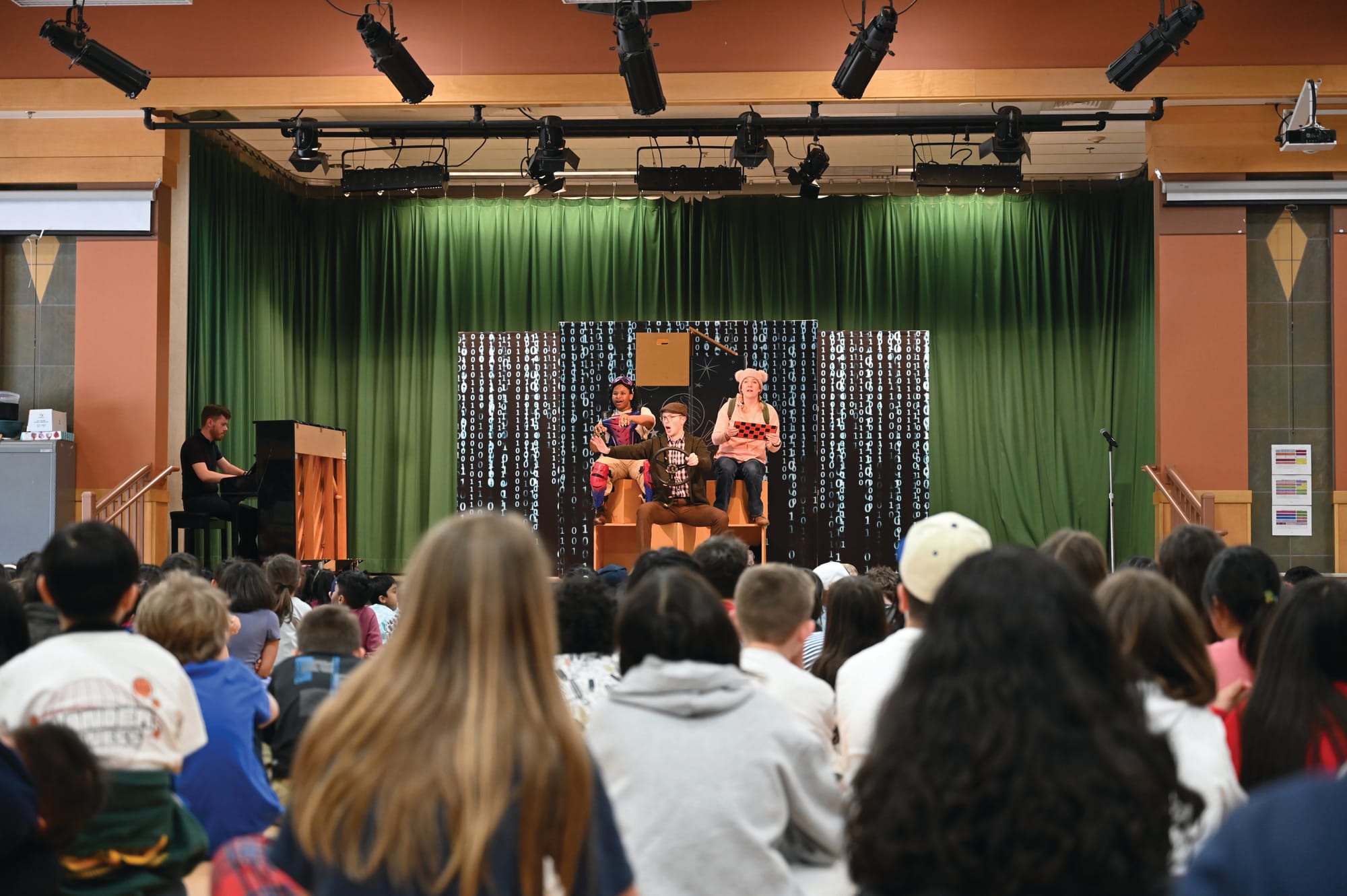
Statewide Tour
By Glenn Hare
Above: The School Opera Tour’s performance of Earth to Kenzie at Newcastle Elementary School, Newcastle, WA. The School Opera Tour traveled more than 5,000 miles across Washington this spring, performing nearly 60 times.
This spring, Seattle Opera’s School Opera Tour presented Earth to Kenzie throughout Washington. The fully staged one-act production written specifically for young audiences is the story of Kenzie, an imaginative fifth grader who finds comfort in her favorite video game when her home is threatened and she finds herself living in a family shelter with her mom.
This is a real narrative for many students in our state. According to recent data, some 13,000 young people (ages 12–24) are experiencing homelessness or are in unstable living environments in Washington. “Unstable housing is a reality for some students,” said Sara Litchfield, the opera’s former Associate Director of Youth Programs. “Seeing their story represented shows kids that they are not alone in this experience.”
“I like the opera, especially the low voices because they’re more dramatic,” said a second grader at Newcastle Elementary School.
Among the 58 shows performed during the tour, 37 performances took place at
Title I Schools*, and at locations with few opportunities for students to experience live performing arts. One such community is Toppenish, WA, explained Litchfield. “This is our third year visiting Toppenish and the annual visit of our tour has become an anticipated part of the school year schedule.”
Earth to Kenzie was originally slated to tour spring 2020 but was only on the road for two weeks before everything shut down due to the pandemic. “It’s wonderful to give this piece a full tour this year, featuring some of the original cast,” Litchfield added.
The School Opera Tour traveled 5,017 miles from February through May.
*Title I Schools are in communities with the greatest needs.
Saturday, May 17 at 1:00 PM
Mural Amphitheatre, Seattle Center Campus
305 Harrison St, Seattle WA, 98109
Saturday, June 7 at 11:00 AM, 2:00 PM, 5:00 PM
The Opera Center
Youth 18 & Under: $10
Adults: $25; 1 Flex Pass Credit
Happy Retirement
By Glenn Hare
Seattle Opera Choristers Stephen Wall and Eleanor Stallcop-Horrox, Assistant Conductor Philip A. Kelsey, and Company Manager Paula Podemski have worked at the opera a combined total of 145 years, creating memorable opera experiences both onstage and behind the scenes. Tosca marks the end of their Seattle Opera careers, but before they start the next chapter of their lives, these veteran professionals shared some of their best memories. All agree that they are looking forward to being in the audience and staying in touch with their friends at the opera for many years to come.
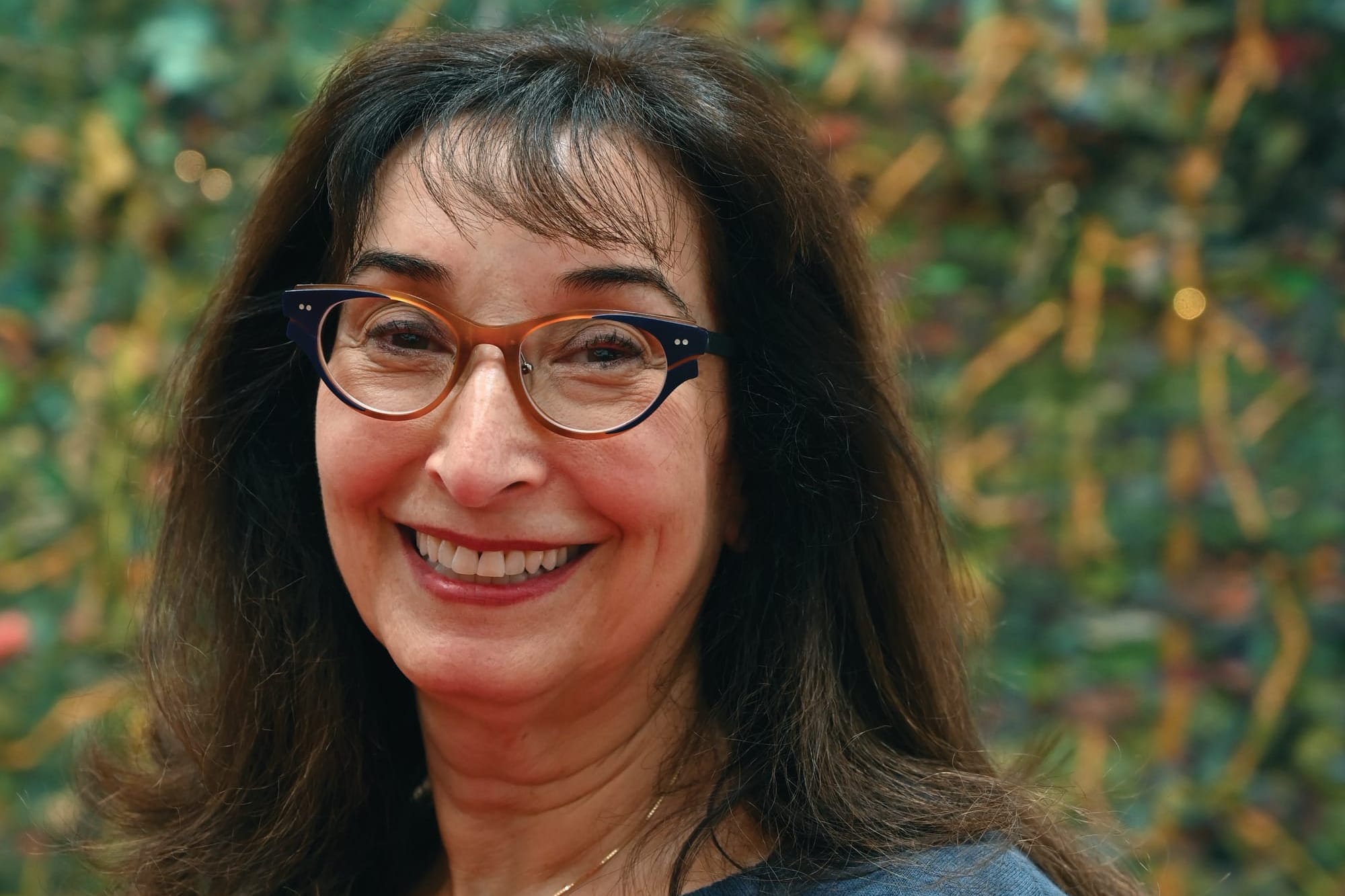
Paula Podemski: Concierge to the Stars
Locating nearby gyms, securing childcare, and arranging medical appointments are some of the day-to-day artist’s requests Paula has fulfilled as the Company Manager. Hired in 1993 as a Production Assistant, Paula became the Company Manager several years later. Coordinating visa applications, casting child performers, and recruiting supernumeraries have been some of her other duties.
Paula has a deep appreciation for supers because they’re volunteers who are required to attend rehearsals and perform in every performance. “It’s a huge commitment,” she says.
But in 1998, Paula encountered a few supernumeraries who weren’t willing to go the distance. She recruited 20 bodybuilders to appear shirtless in Tristan and Isolde, a task that took four months. “I went to gyms and powerlifting and bodybuilding competitions,” she remembers. Among the men who volunteered, a few weren’t very reliable. “At least two to four of them wouldn’t show up,” she says.
After 32 years at Seattle Opera, Paula will miss her colleagues and volunteers the most. “It’s like my second family,” she says. “It’s a group that puts aside personal agendas for the good of the whole, for the good of the show.”
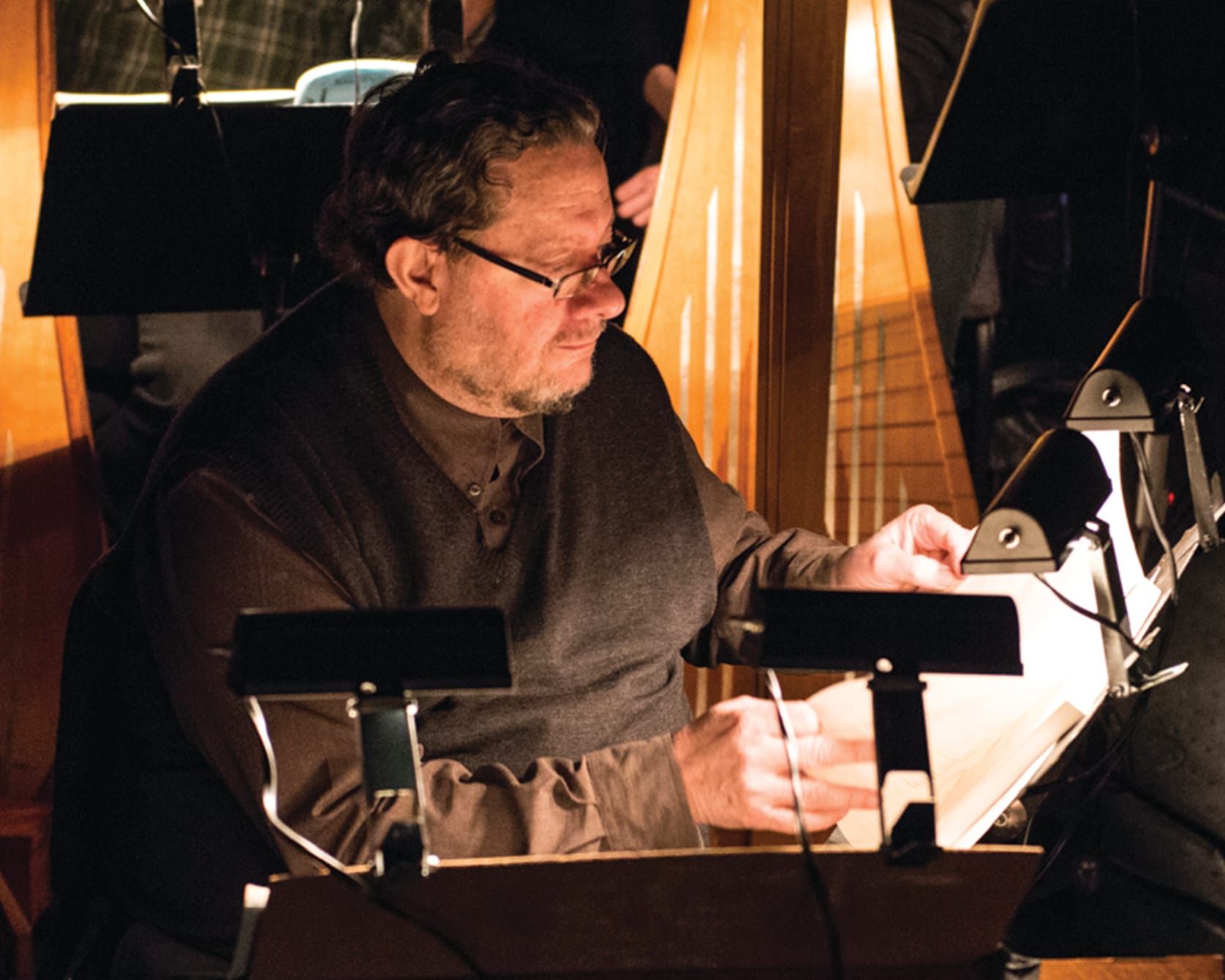
Philip A. Kelsey: A Master of the Ring
Philip has had a role at Seattle Opera since the 1983 Ring cycle when he joined the company as a pianist, making him one of the few staff members who’s worked on all three Rings. He remembers it as an exciting time as well as a labor of love, because of the commute from Portland.
Since then, Philip has been a Music Administrator, Assistant Conductor, and a Vocal Coach at the opera. “As a vocal coach, I help singers not only with language pronunciation, but also with comprehending the text,” he said. So, most coaches, like him, are language junkies. “I’m pretty fluent in German, I read French, I understand Italian, I’ve studied Russian, I’ve studied Japanese, I’ve studied Czech diction, and will happily try to pronounce just about anything correctly.”
What’s more, as the Assistant Conductor, Philip leads off-stage musicians and singers, and he plays the harpsichord when a production requires it. And during the company’s 2009 production of Pagliacci, he arranged an 11-minute chamber piece from music by Leoncavallo, which was played during the performance.
In retirement Philip plans to spending time with his four grandchildren—who live nearby.
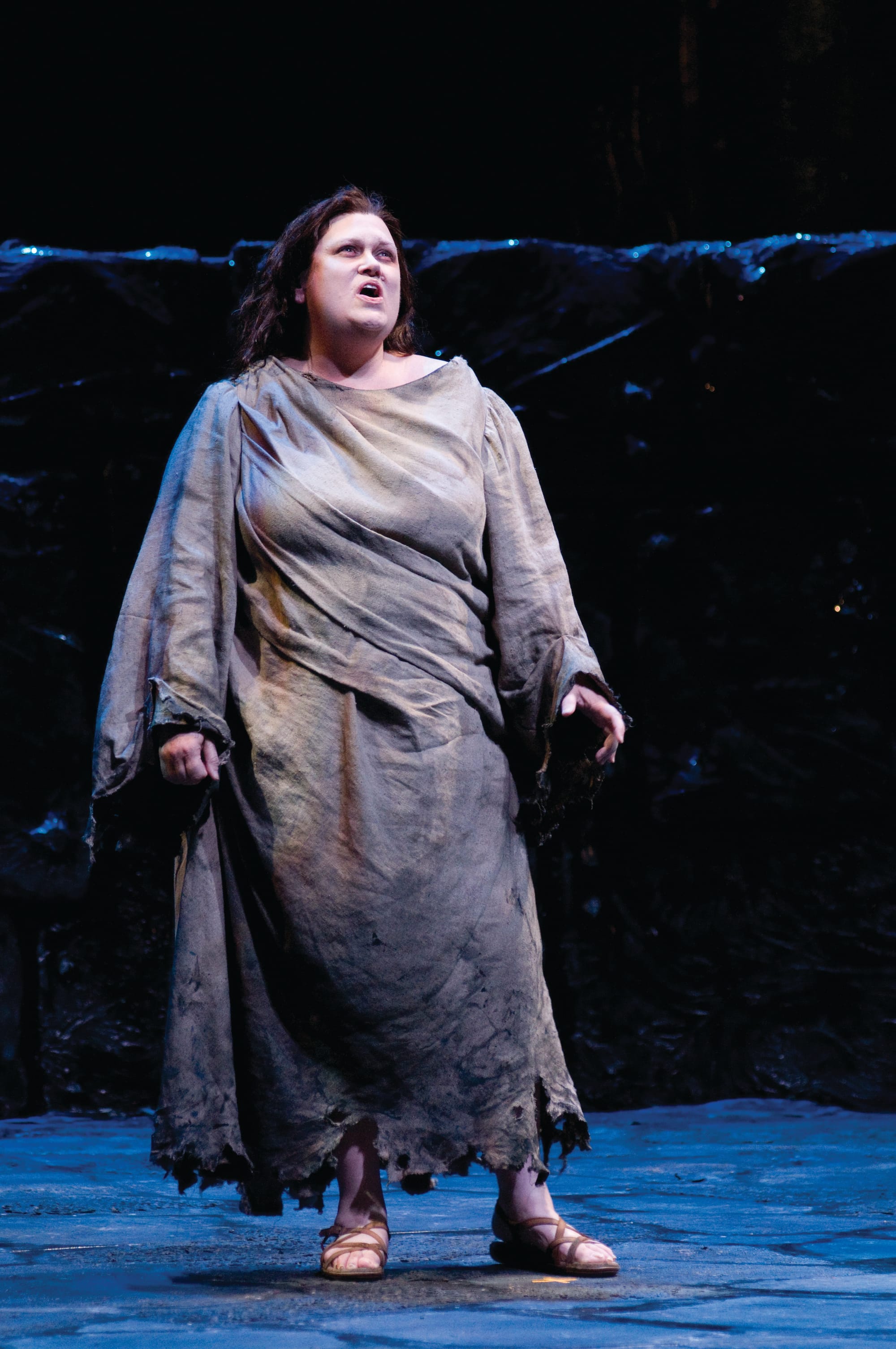
Eleanor Stallcop-Horrox: Maid of Honor
It’s not easy being a member of an opera chorus. Sometimes the costumes are uncomfortable and the choreography confusing. Then there are times when you’re required to sing from the catwalk high above the stage. But long-time soprano Eleanor Stallcop-Horrox loved it all. “The catwalk was a bit scary,” says Eleanor, who has been a member of the Seattle Opera Chorus since 1997.
Eleanor fondly remembers her 2008 role in Elektra. “I was the Fifth Maid. I thought I would sing five notes. There were three pages!” she says. Mary McLaughlin, who sang The Overseer’s part, was directed to knock Eleanor to the floor and dunk her head in a bucket of water. “Mary tried several times to dunk me, but the bucket was too small, and she kept whacking my forehead on the side of the bucket,” Eleanor says. Finally, they got a wash tub. Once her head was in the water, the other maids had to get her wig wet. “So, when my hair came out of the water, there was a huge dramatic spray of water,” she says.
The chorus is like a family, explains Eleanor. When she was diagnosed with cancer, the women accompanied her to treatments and checked on her. “God, they were wonderful. Absolutely wonderful. This is a passionate group of people. I will miss being around them.”
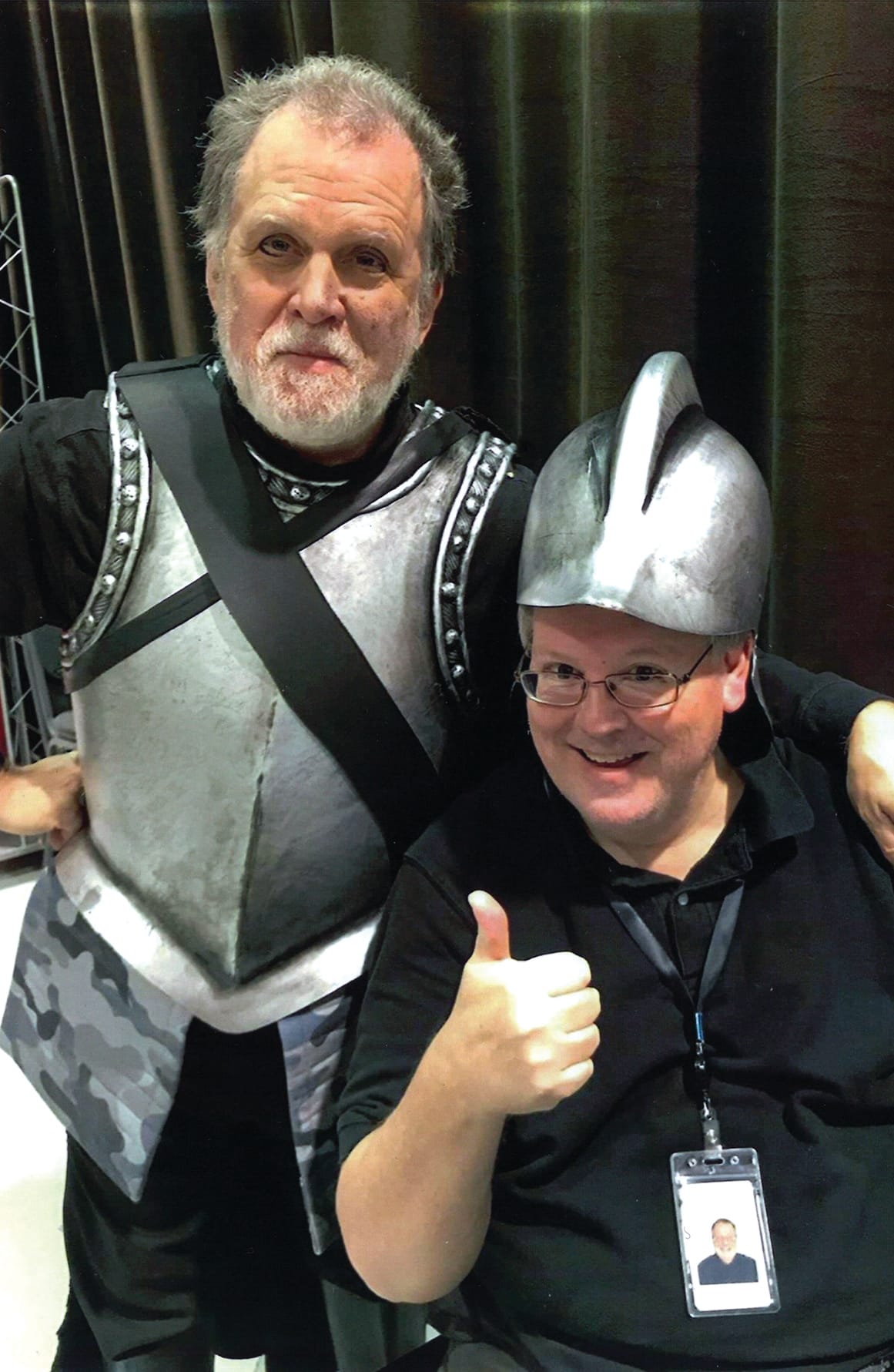
Stephen Wall: The Ballard Opera Man
Tenor Stephen Wall has performed in Seattle Opera’s Götterdämmerung twelve times. “My first performance was in the 1982 Ring cycle, when the company was doing the Wagner masterwork every summer,” he recalls.
After nearly 45 years at the opera, Stephen has appeared as a chorus member in 118 operas, has had 13 supporting roles, and has served as the chorus personnel coordinator three times. But his most beloved role was as The Ballard Opera Man during the COVID-19 pandemic.
When everyone was stuck inside and socially distancing, Stephen stumbled into the role. He began playing string bass on his front lawn. People noticed and he soon replaced the bass with karaoke opera. “I thought I would just make some noise and see if anyone would stick their heads out of their front doors,” Stephen remembers.
The neighbors did more than stick their heads outside—they began attending his improvised recitals. When the local media published stories about his performances, more people came. At the height of his popularity, Stephen believes around two hundred people came out to hear 25 minutes of music. “I was conflicted. I was enjoying it, but I didn’t want to encourage social gatherings. There were rules—six feet distance, masks, and the whole ball of wax,” he remembers. He performed 100 front-yard recitals during the pandemic.
Upcoming Events
EARTH TO KENZIE
The Opera Center
Saturday, June 7, at 11:00 PM, 2:00 PM & 5:00 PM
Youth 18 & Under: $10; Adults: $25; 1 Flex Pass Credit
Kenzie is a fifth grader with a vivid imagination and a taste for adventure. But when her home is threatened, sending her to a family shelter with her mother, her world is thrown into a newfound state of uncertainty. This one-act opera explores themes of empathy and finding strength despite adversity. The fully staged and costumed opera is performed with professional singers and live piano accompaniment. This production is appropriate for all ages, especially families and children. The 11:00 AM performance is a Sensory Friendly performance that can be enjoyed by all patrons. seattleopera.org/kenzie
2025 CREATION LAB PERFORMANCES
The Opera Center
Friday, June 13, at 7:30 PM
Sunday, June 15, at 2:00 PM
Tickets: Pay What You Wish
Join us for this year’s Jane Lang Davis Creation Lab performances. These performances feature four new 20-minute works by composer-and-librettist teams. The operas are the culmination of months of development that included working with professional composers and librettists, table reads, music workshops, and rehearsals. seattleopera.org/creationlab
Print Edition
